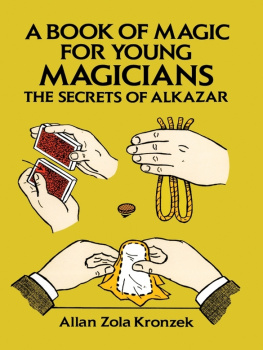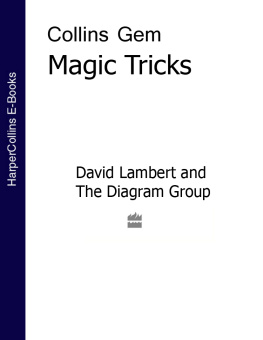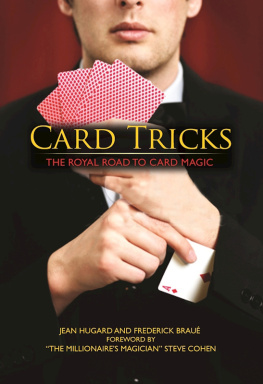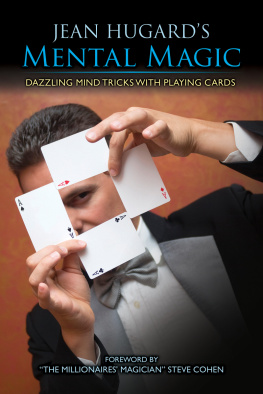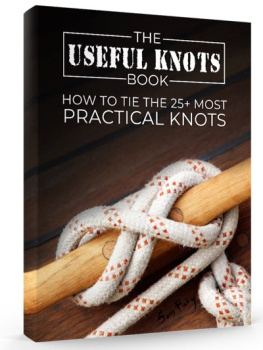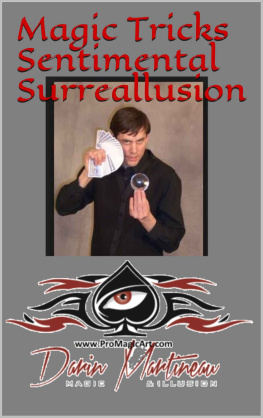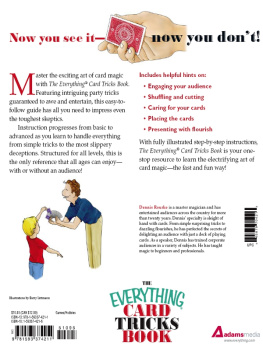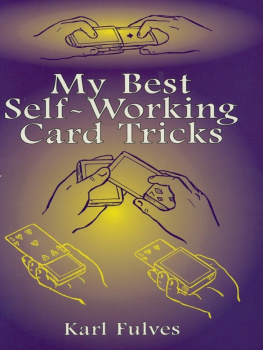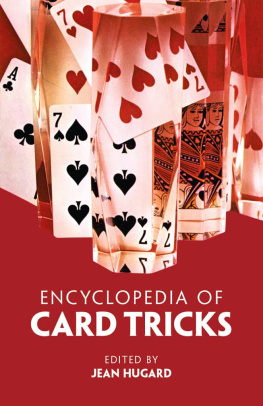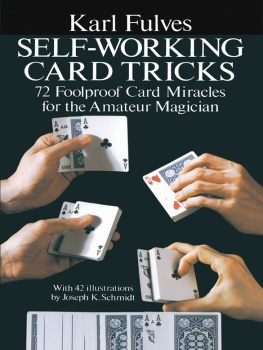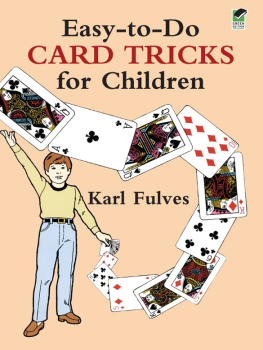M uch of your success as a magician will depend on your ability to perform certain actions in full view of the audience, without anyone becoming aware of what you are doing. This is not accomplished by being secretive or quick with your hands. In fact, quick movements are among the easiest to detect. Rather, it is done by cleverly directing the attention of the viewers away from the secret action and toward something else. This is called misdirection . It is one of the most powerful and important tools a magician has. By understanding how it works and how to use it, you can influence not only what the audience sees, but also what they believe.
When I first began my studies with Alkazar, he gave me a set of principles concerning misdirection. They are excellent observations and apply to nearly all the magic I have ever done.
THE PRINCIPLES OF MISDIRECTION
The key to misdirection lies in learning to control attention.
PRINCIPLE I
The audience will pay attention to what moves. They will also pay attention to what makes noise.
What doesnt move and doesnt make noise doesnt attract attention.
PRINCIPLE II
The audience will always look where the magician looks.
The magician must never look at what he wishes to conceal.
PRINCIPLE III
The audience will treat as important what the magician treats as important.
The audience will treat as unimportant what the magician treats as unimportant.
The magician nearly always treats what is important as if it were unimportant. Likewise, he treats what is unimportant as if it were important.
Now, lets look at some of these ideas at work. The following trick is an ideal place to begin because the misdirection is built right into it. It is easily done on the spur of the moment and is one of Alkazars favorites. He calls it Passing Through.
While seated around the dinner table or at a restaurant with friends, Alkazar announces that he is going to perform a miracle. He is going to cause a coin to pass through the table. He borrows a quarter and places it on the table. Next, he covers some handy objecta salt shaker, for instance with a napkin and places it on top of the coin.
Alkazar places one hand under the table to receive the coin. He utters some magic words and orders the coin to pass through the table. He then lifts the shaker to show that the quarter is gone. To the wizards surprise, nothing has happened. The coin is still there.
But wait. Alkazar suddenly notices that the coin is heads up instead of tails up. No wonder it didnt work. The magician turns the quarter over, covers it with the salt shaker, and again utters some magic words. But once again, the magic fails.
By this time the audience is beginning to wonder. Is Alkazar really a magician? Of course he isand now he proves it. There is a very powerful spell I dont use often, because it can be dangerous, he announces. But this is no time to be cautious.
Again he covers the coin with the salt shaker. Atoms and molecules, chants the mystifier, by the power that is mine, I order you to make way. Oomash Kavasi Zid! Without warning, Alkazar slams his hand down on the napkin and, instantaneously, the salt shaker passes through the table and is immediately brought up from underneath! What has taken place is an impossible demonstration of one solid object passing through another. As for the quarter, it is still lying on the table under the now-crumpled napkin. Alkazar returns it to its owner with a smile and says, Sometimes the powers of magic surprise even me. He then begins another feat of mystery.
What makes this trick so stunning in Alkazars hands is not merely the secret, but the way in which he uses misdirection and surprise to throw the audience off guard. Heres how to do it.
Place the borrowed coin on the table a foot or so in front of you. Take the salt shaker and cover it with the napkin, explaining that the penetration of the coin must take place out of sight. Squeeze and mold the napkin around the top and sides of the shaker so that the shape of the shaker is clear. Make sure the napkin hides the entire shaker, especially at the bottom, where the napkin spreads out onto the table. (See .) Then take the napkin-shaker combination and place it on top of the coin.
Place your left hand under the table to receive the coin. Your right hand should hover a few inches above the shaker. Make a magical pass, commanding the coin to penetrate the table. Pause. Appear somewhat puzzled, and bring your left hand up from under the table. With your right hand, lift the shaker-napkin by grasping it near the very top between your thumb and middle finger, and bring it toward you so that it ends up slightly past the edge of the table and an inch or so above it. What you are supposedly doing is showing that the coin is still there, so make sure you look at the coin and pay no attention at all to your right hand. Glance at the spectators, and then realize that the coin is wrong side up. Lean forward just a bit, and with your left hand turn the coin over. At the exact time that you are turning the coin, lower your right hand slightly so that the napkin touches the tabletop, loosen your grip, and allow the shaker to slip out of the napkin and fall into your lap. (See .) Watch only the coin. Then take the napkin, which has kept the shape of the shaker (magicians call a hollow form like this a shell ), and place it back over the coin as if the shaker were still inside. Release the napkin.
As bold as this move is, absolutely no one will realize what has just gone on because of the superb misdirection. From the very start, the audience has been led to believe that they are watching a coin trick. This causes them to think the napkin and the shaker are unimportant (Principle 3). The turning of the coin holds the audiences attention at the very moment the shaker is being stolen (Principles 1, 2, and 3). And, finally, the replacing of the shell causes the spectators to assume that the shaker is still there.
Continue by attempting once more to pass the coin through the table. This time, when you lift the shaker to show the coin, dont move it far from the coin. Then cover the coin again. To conclude the trick, say a few words about the very powerful magic you must use. As your left hand goes under the table, secretly pick up the salt shaker from your lap and hold it under the table, directly under the shell. Do this by touch alone. Under no circumstances should you look at your left hand or the shaker. Slam your open right hand down onto the shell and smash it flat against the table. Immediately bring the shaker up for all to see. The illusion of passing through is perfect.

